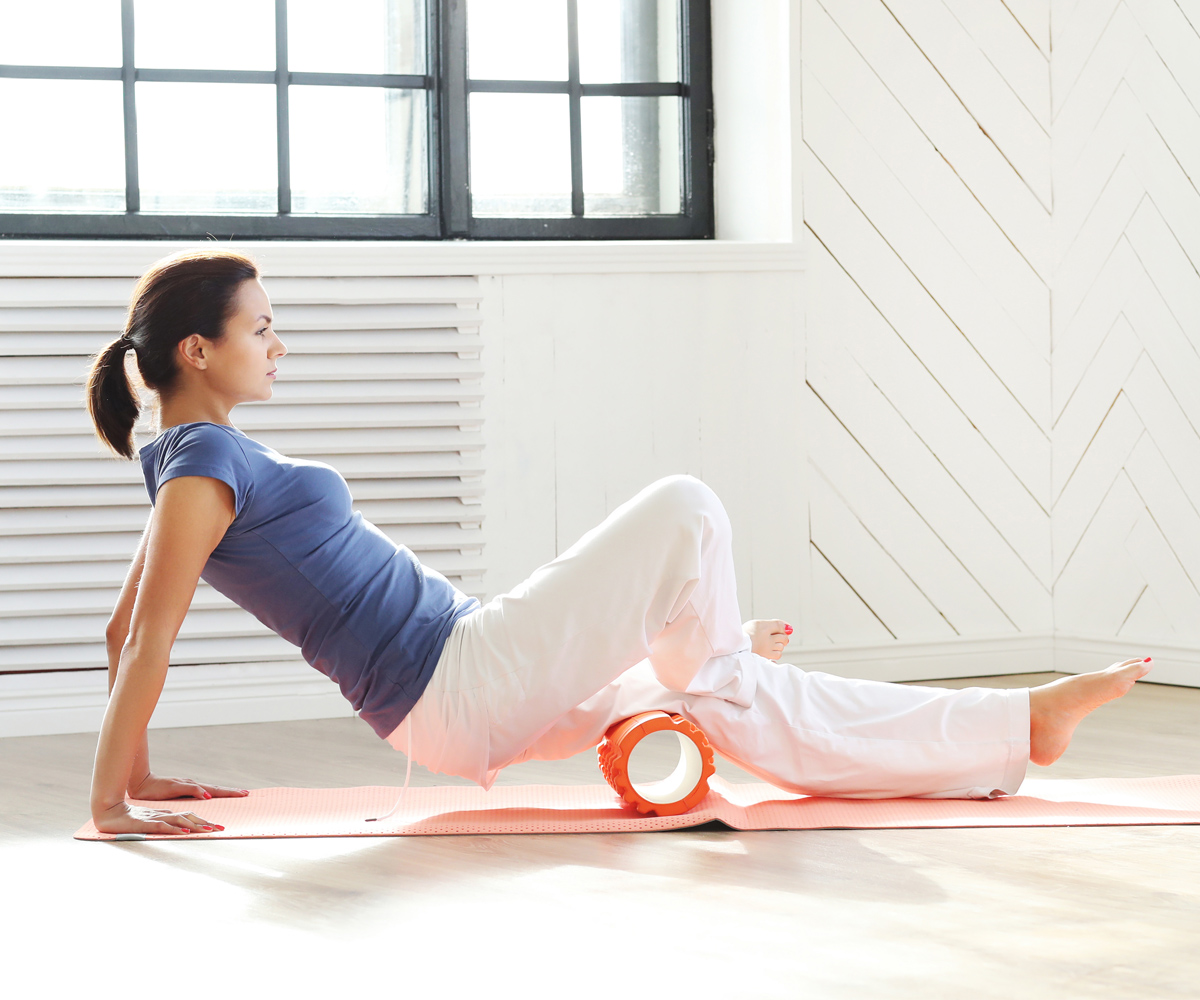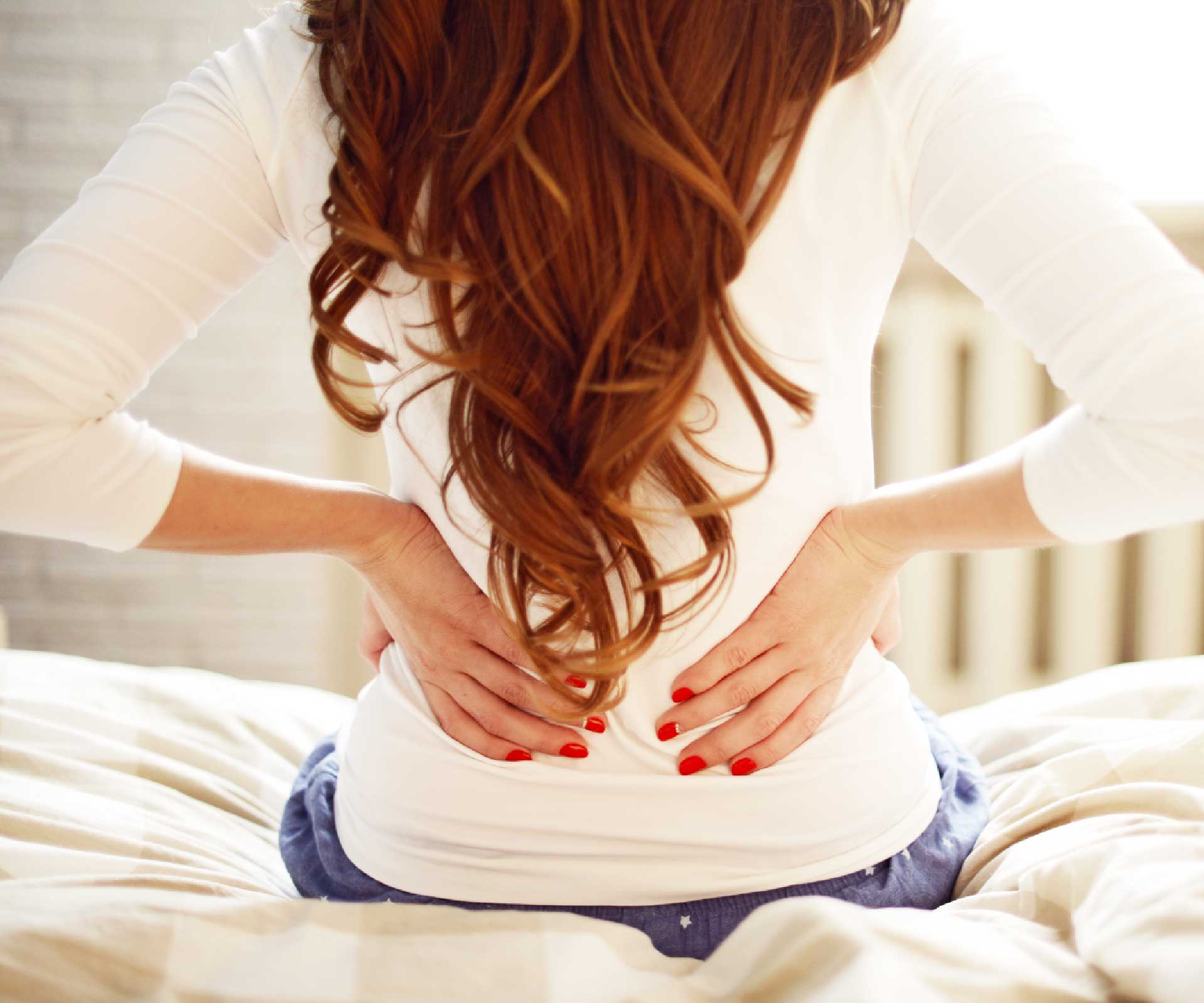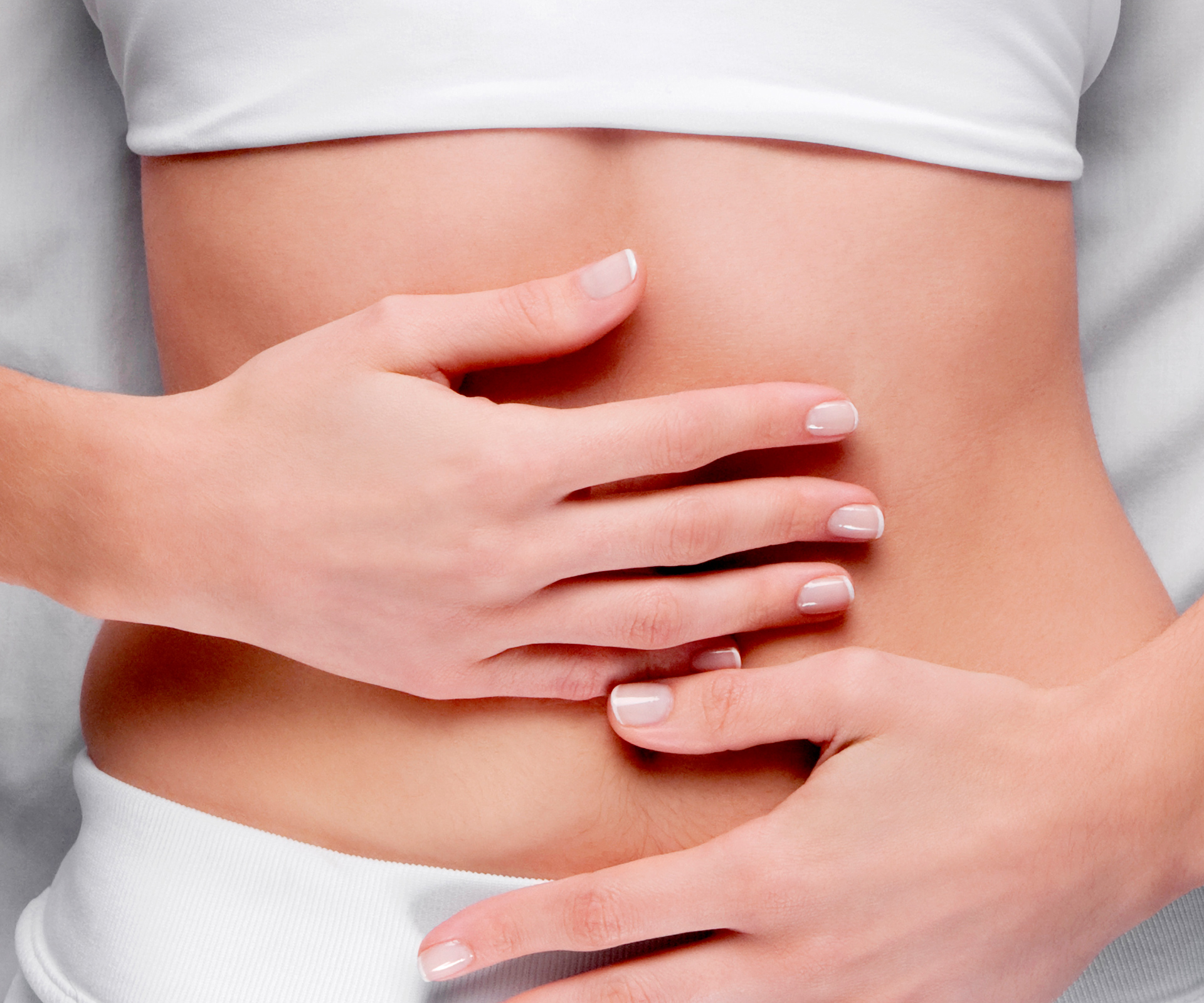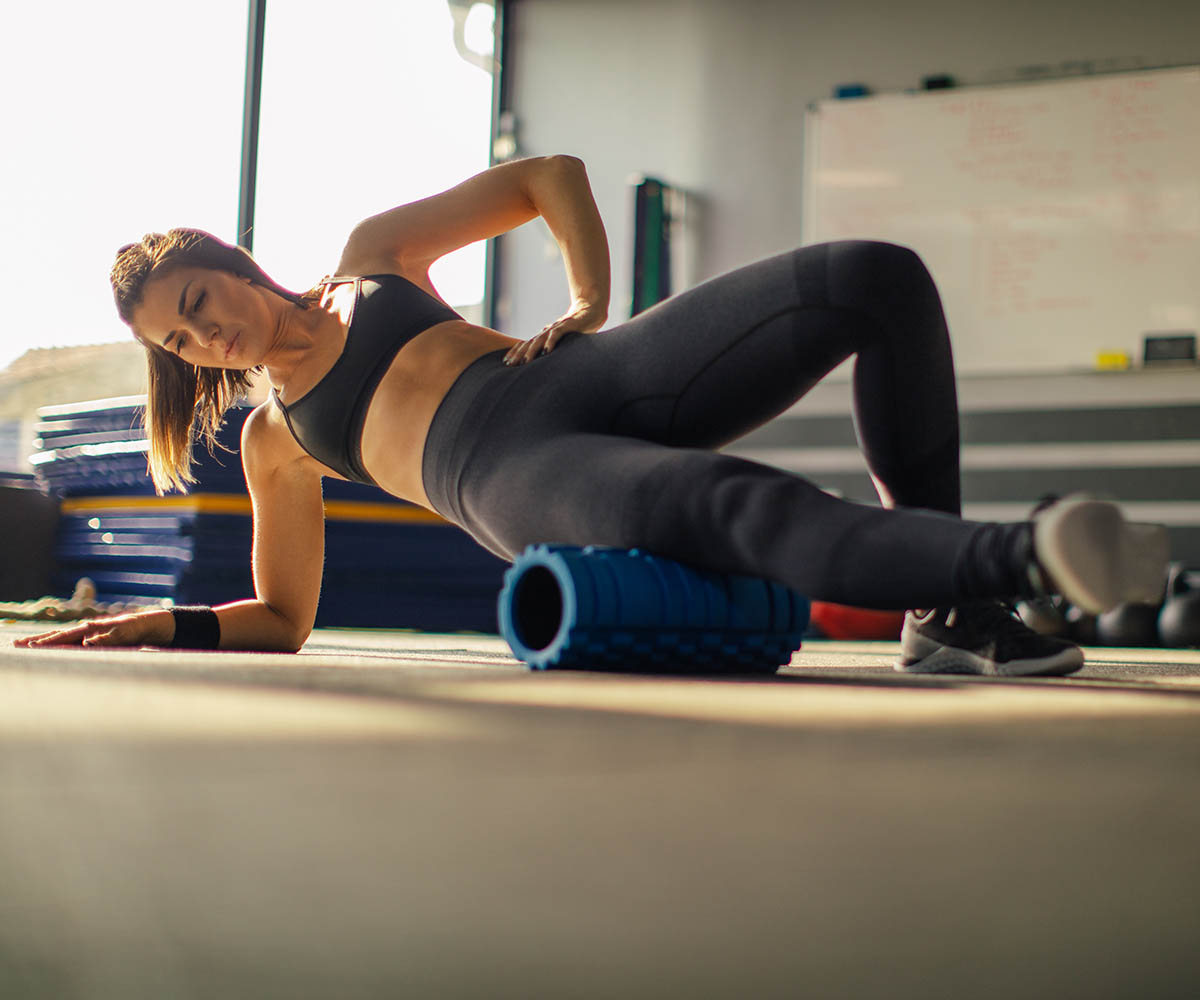Foam Rollers
Bad posture, back pain – the reason behind these complaints is usually due to our increasingly sedentary ways.
That’s where foam rolling comes in. It’s a deep-tissue massage you can do yourself in front of the TV.
But when it comes to foam rollers, we can opt for either smooth or textured rollers. So, which is best?
The basic design of a smooth roller provides even pressure across the entire length of the roller.
A smooth foam roller is a good choice for someone who is just getting into rolling, because the pressure isn’t as intense as a textured roller. They’re also typically less expensive than textured rollers.
On the other hand, when it comes to textured rollers, the ridges and knobs on a textured foam roller can provide a more precisely targeted massage to work out knots in your muscles. Many rollers include a variety of textures, so you can find the right amount of pressure.

A smooth foam roller is a great choice for beginners.
(Image: Getty)When shopping for a foam roller, also consider the density, shape and size of your roller.
If you’ve already tried using a foam roller, you may have a love/hate relationship with it. The process of using the roller can be uncomfortable, but massaging knots – also called myofascial adhesions, fascia being the connective tissues that bind and stabilise the muscles – may help free your muscles of pain.
LA-based body-alignment specialist Lauren Roxburgh explains, “While healthy fascia is thin, smooth and hydrated, unhealthy fascia is thick and holds toxins and stress.
“Even lying with the roller lengthways under your back allows gravity to realign the spine. It takes two to three weeks to get rid of all of the inevitable density within our body.
“Within a week, you’ll feel more upright and be walking taller.”
Although there’s still more research to be done, a recent study in the Journal of Sports Rehabilitation found that foam rolling – coupled with old-school static stretching – could increase range of motion in the hip more than stretching alone.
Some athletes also report improved blood flow and decreased recovery time after foam rolling.
Foam rolling can help boost immunity. The rolling motion improves blood flow and can move lymphatic fluid throughout the body, which aids the body’s natural cleansing process.
Rolling can also help reduce anxiety and enhance your mood, says Lauren.
Decreasing muscle tension and improving circulation can help to alleviate stress, explains Lauren, adding that it can work as a form of “mindful movement”.
When rolling is coupled with full and deep breathing, the results can be powerful.
Tip:
Using a foam roller may take a little practice. Try them out when your muscles are warm, like after a workout, and gently and slowly roll your body weight back and forth across the roller.
Massage Balls
Also known as mobility balls, myofascial release balls, yoga balls, physical therapy balls, or spiky balls, massage balls come in a variety of sizes and shapes.
They can be slightly more difficult to use because of their size, but the ones that are smaller than a foam roller allow you to apply more pressure to aching muscles, so it effectively provides a deeper massage.
You’ll want to select the size based on the body part you’re working on. For hands, forearms and feet, opt for a golf ball size.
For calves, hamstrings, abdomen, buttocks, upper and lower back and neck, a tennis ball size works best.
When it comes to chest and shoulders, you’ll need to look for a ball about 100mm in size.
Acupressure Mats

The spikes in acupressure mats gently press the skin, promoting blood flow to the area, which can ease muscle pain and boost relaxation.
Commonly known as the ‘bed of nails’ method or the Shakti mat, acupressure mats work on contact.
When you walk, stand, or lie down on them for anywhere between five and 30 minutes, the spikes exert pressure on your acu-points.
Scared of needles? This could be your answer.
Unlike acupuncture, which involves inserting thin needles at various acu-points on the body, acupressure is non-invasive and relieves aches and pains by diffusing your energy, or ‘chi’, through touch and pressure.
The aligned dome

The aligned dome can be used as a self-massage tool and to improve stability. (Image: Getty)
This tool is designed to be used on both sides for different effects.
The pebbled side is used as a self-massaging tool to stimulate areas such as the scalp, temples, hands, or feet.
For self-massage, place it on the floor, rest the area of the body you want to target on the dome, and gently roll the area over the dome.
It’s recommended to do a session at night and work the dome all the way down the body to release stress and tension built up throughout the day.
When flipped over, the smooth side works as a stability tool for balancing exercises as well as strength and core workouts.
Used as a pair, the domes create dynamic instability in different movements that help train your deep core muscles. You can use them barefoot, with socks, or with shoes.
The body sphere

The body sphere is perfect for improving balance and gentle core workouts.
(Image: Getty)The malleable ball provides organ massage and has been designed as a total-body tool for sore muscles.
It targets areas such as the abdominals and lower back, where a traditional foam roller might be too dense. It also works as a small exercise ball for building core strength, especially in the pelvic floor – an area that many women lose connection with as they age.
Place the sphere on a hard floor – not on a rug – and roll an area of your body over the ball.
If you’re using this on a sensitive area, such as the stomach, it can feel intense at first as you release tightness and stress.
It’s recommended that you focus on breathing and relaxing, and start with the ball inflated around 60-70 per cent and gradually work your way up.
The infinity roller

The infinity roller’s small size makes it great for rolling out hard to reach areas. (Image: Getty)
This is the perfect travel companion due to its mini size, and is ideal for a deep-tissue massage in any hotel room.
The unique shape was designed to cradle small, hard-to-reach places and go deeper than a full-size foam roller can.
The soft, cushion-like foam works especially well for areas such as the feet, shoulder blades, forearms, and wrists, where the muscles attach to the joints.
Place the roller on the floor, against a wall, or on a chair, and roll over the area you want to target.
In your car, you can place the roller on your lower back to relieve tension while driving, and you can also use it on your feet after a day of wearing heels.
The roller is lightweight and compact, so you can put it against the wall and work your shoulder blades when travelling.
A physio weighs in on these self-massage tools
We asked Helen Dudley, Pilates instructor and physiotherapist at Auckland Physiotherapy Ltd for her thoughts on the matter.
Which tools do you recommend to patients and why?
One of my favourite things I get patients to do at the end of the day is put on a mindfulness app or some soothing music, lie on the foam roller – they put their head on one end and it runs along their spine, with their arms out – and get them breathing and releasing.
It’s a way for the spine to relax.
The spiky ball is great too. When you’re in pain with an injury, or if you’re training and you know you’re tight, it’s really good to have a tool that you can use yourself.
We get people to do it for back pain, or if you’re very tight into your glutes. Some people have [balls] in their bags at work and use them if they’re sore around the neck and shoulders.
What else can we do in the workplace?
People can sit on little posture cushions called air cushions at their desk. It helps to use your core to keep upright; it’s a little wobbly, which means you can’t just slouch down into it.
If you’re sore then you can put it behind your back and relax back, a bit like a cushion.
Our massage therapist gets people to use the spiky side of it for a little foot massage during the day. If you’ve been sitting all day, blood flow is probably a bit stagnant in your legs, so moving on the spiky surface is going to make you feel better.
What can we do when travelling?
There’s evidence for compression tights and also just doing circulatory exercises, like feet up and down and getting up and moving.
If you do that, you’ll see the benefits of movement – because otherwise you get off the plane and your ankles are all puffy.
If my Pilates clients want to move and stretch when they’re away, then I get them to take a little toolkit, so they go with a spiky ball and a small Pilates ball that they can blow up and deflate, and they can do floor stretches and exercises using it.




